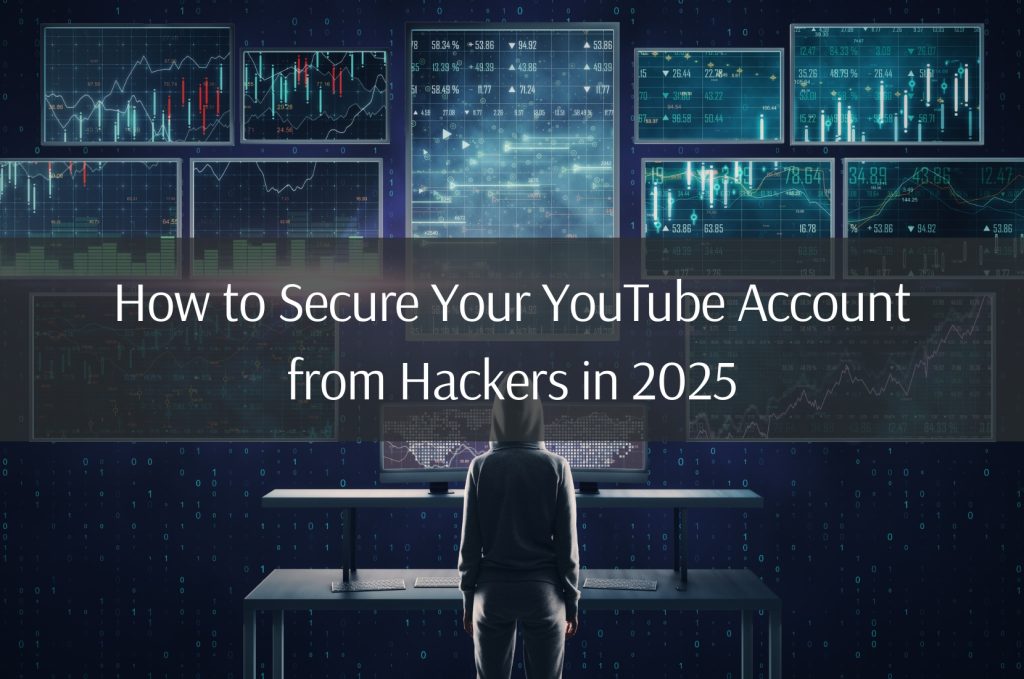
In 2025, the surge in content creation has also led to a rise in cyber threats targeting digital creators. YouTube accounts are prime targets for hackers due to their access to monetized content, brand partnerships, and personal information. If you’re a creator, influencer, or business managing a YouTube presence, securing your account should be at the top of your digital priorities.
Whether you’re growing your channel organically or investing in digital tools like buying YouTube subscribers or watch time, your efforts will be wasted if your account isn’t safe. Here’s a detailed guide to locking down your channel in 2025.
1. Enable Two-Factor Authentication (2FA)
The first line of defense is two-factor authentication (2FA). Google allows users to secure their YouTube accounts with an additional verification step—usually via phone or an app.
Pro Tip: Use Google Voice accounts as your backup number for extra privacy and control over account recovery.
2. Use a Strong, Unique Password
Never reuse passwords across platforms. In 2025, password-guessing algorithms are faster than ever. Choose a long password with a mix of uppercase, lowercase, numbers, and symbols.
If you’re managing multiple digital properties, consider using a secure password manager.
3. Avoid Public Wi-Fi or Use a VPN
Public Wi-Fi is an open invitation for man-in-the-middle attacks. If you’re uploading or managing your videos from public spaces, use a reliable VPN to mask your IP address and encrypt your data.
Tip: If you use bulk email accounts or old Gmail accounts for multiple YouTube channels, make sure each has a distinct, secured login setup.
4. Beware of Phishing Scams
Hackers often disguise themselves as YouTube support or brand sponsors. They’ll send fake links asking you to log in or share verification codes.
Always check email sender authenticity, and don’t click on links unless you’re sure they’re from YouTube’s official domain.
5. Regularly Monitor Login Activity
Google allows you to view recent sign-ins and device access logs. Make it a habit to review this weekly. Any unfamiliar device or location should be reported immediately, and your password should be changed.
6. Don’t Share Login Credentials
Even with collaborators, it’s best to use YouTube Studio’s permission system. Grant access to your editor or manager without revealing your password.
If you’re managing multiple channels and using services like buying YouTube views or comments, ensure all third-party tools are legitimate and secure.
7. Backup and Recovery Plans
Store backups of your video content and keep recovery email accounts active and secure. You can create multiple email accounts specifically for YouTube channel recovery.
8. Don’t Ignore Google Alerts
Enable Google Alerts for any login or recovery attempts. The sooner you’re aware of suspicious activity, the quicker you can act.
9. Use Only Trusted Tools and Platforms
From editing tools to subscriber services, ensure every external application is vetted. Always avoid shady platforms promising unrealistic growth. Instead, use trusted marketplaces like SEO SMM Boosters for reliable services such as:
10. Set Up Alerts for Suspicious Activity
Use Google’s in-built alert system and third-party tools that notify you of any changes in account access, deleted videos, or unauthorized uploads.
Stay Proactive, Not Reactive
2025 has redefined digital security. It’s no longer enough to simply upload content—you need to protect your digital identity and income stream. A hacked YouTube account can result in financial loss, damaged reputation, and even banned monetization.
For creators investing in growth tools like YouTube subscribers or enhancing viewer engagement with likes and comments, security should go hand-in-hand with marketing.
